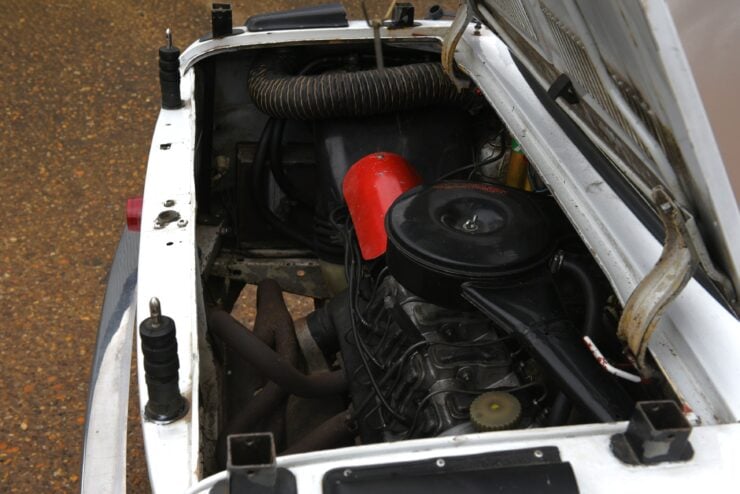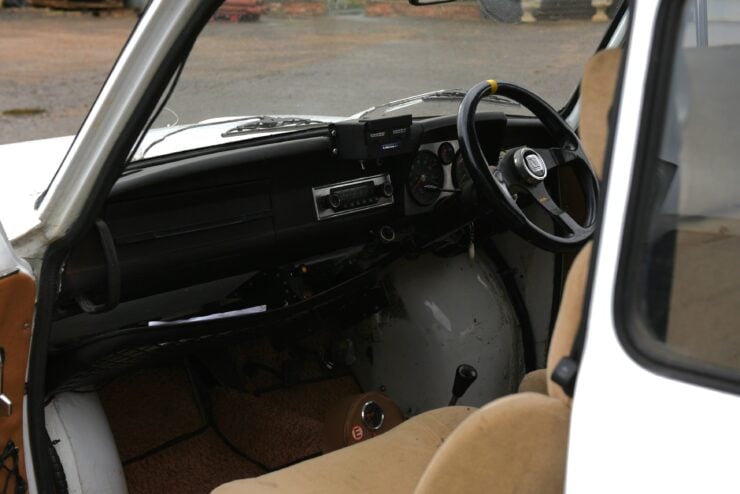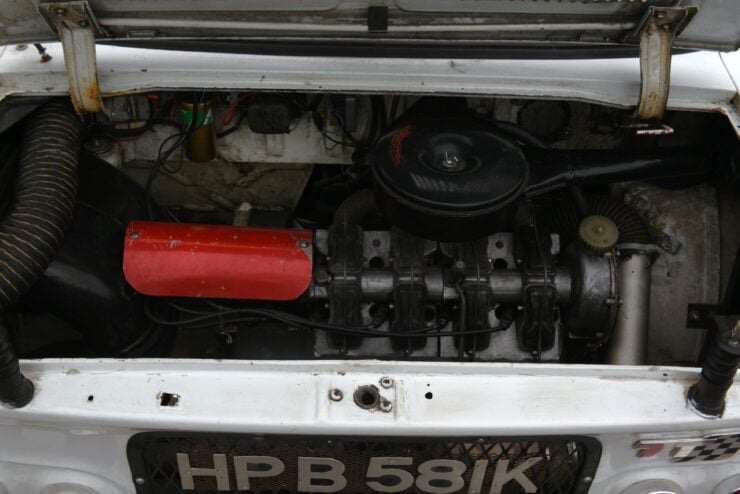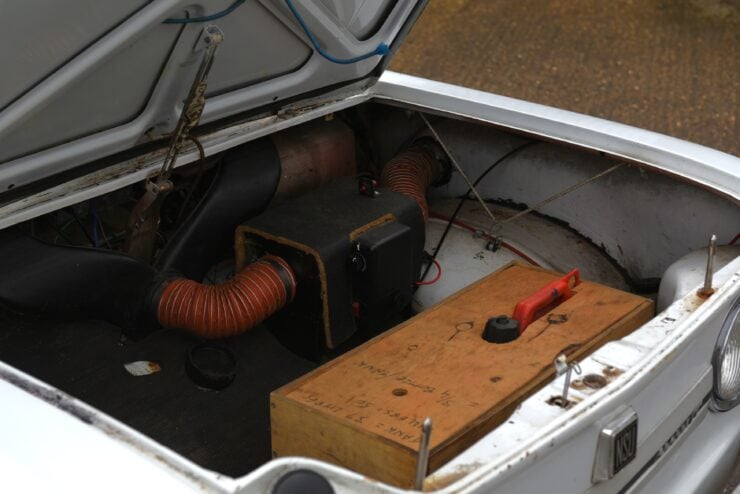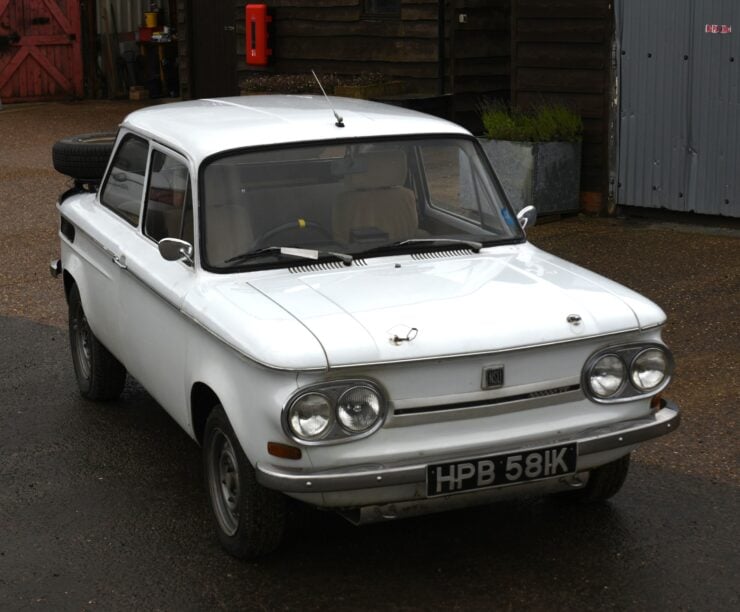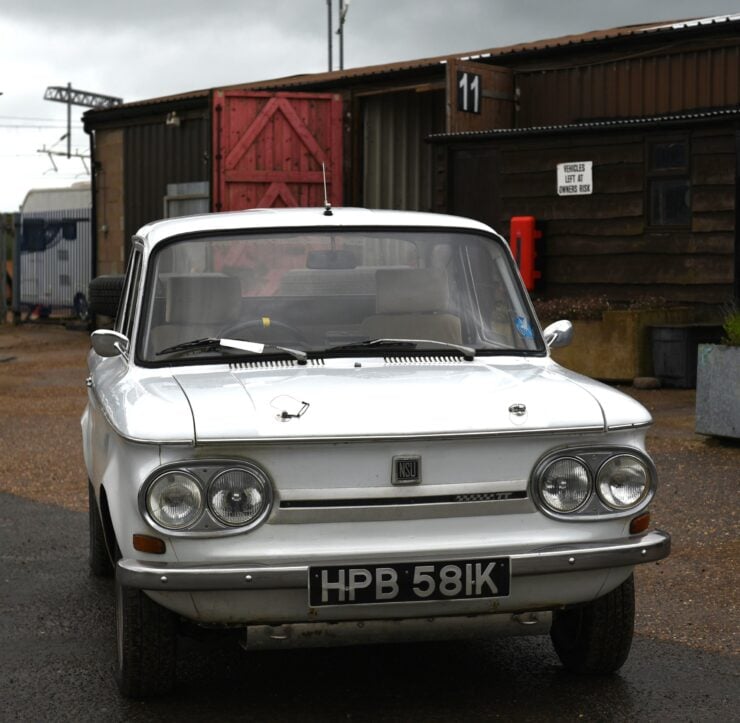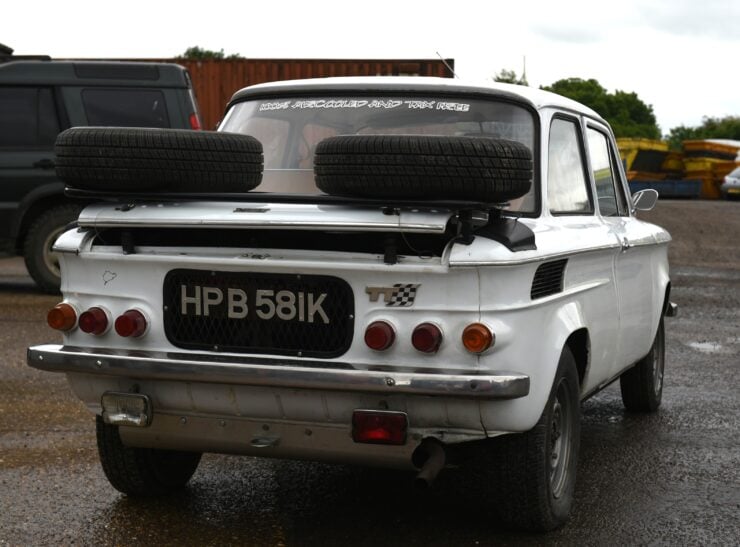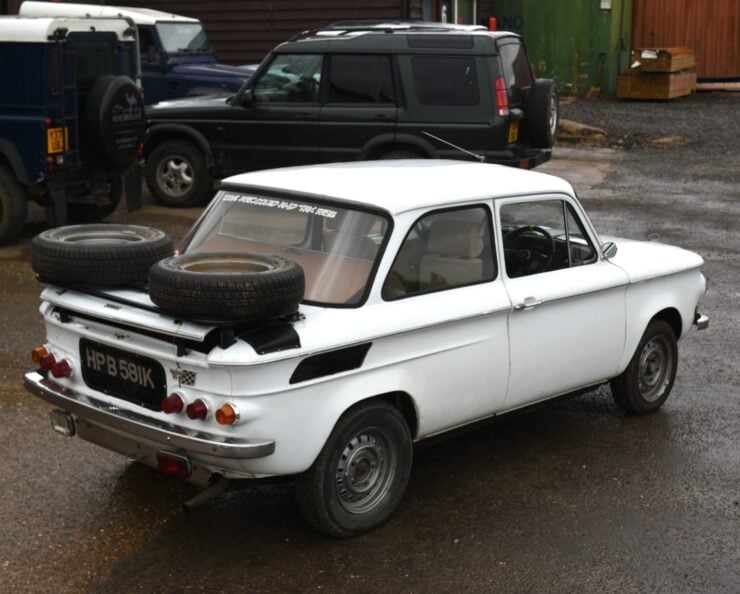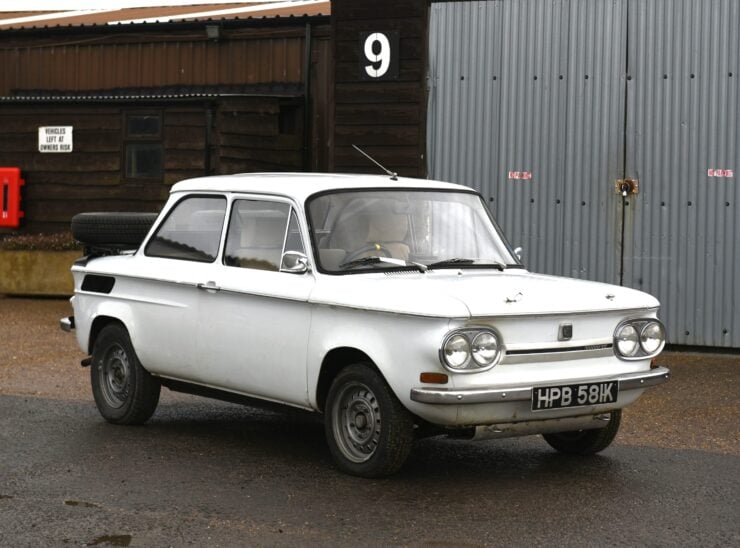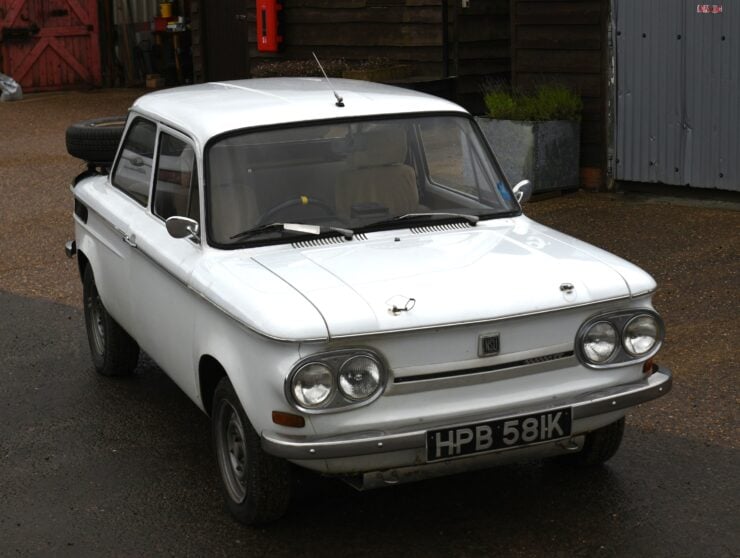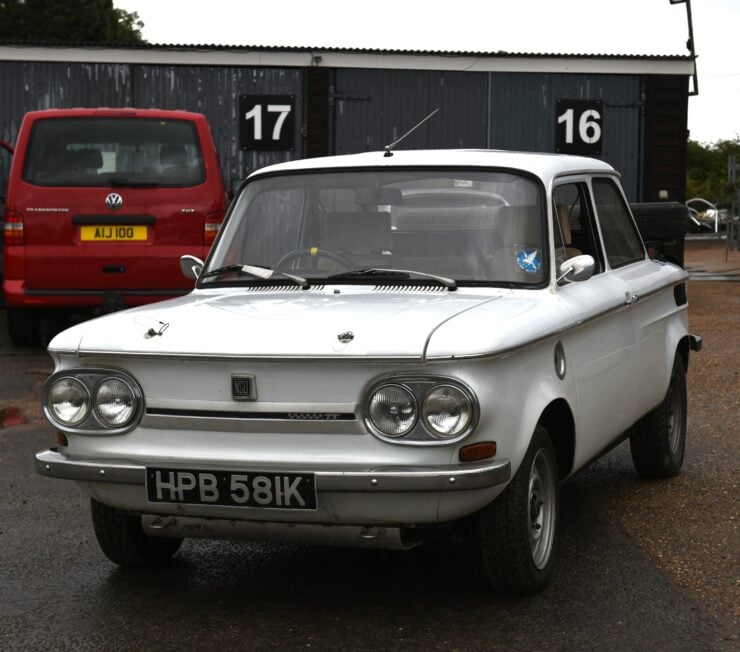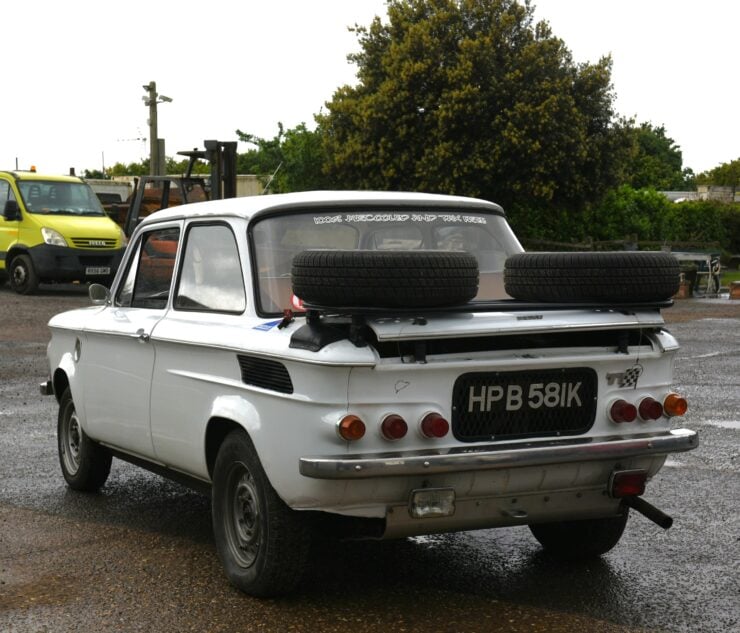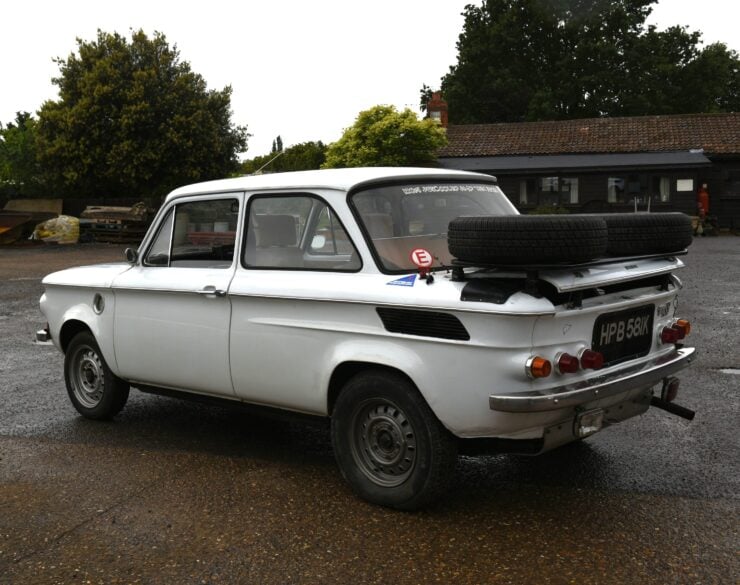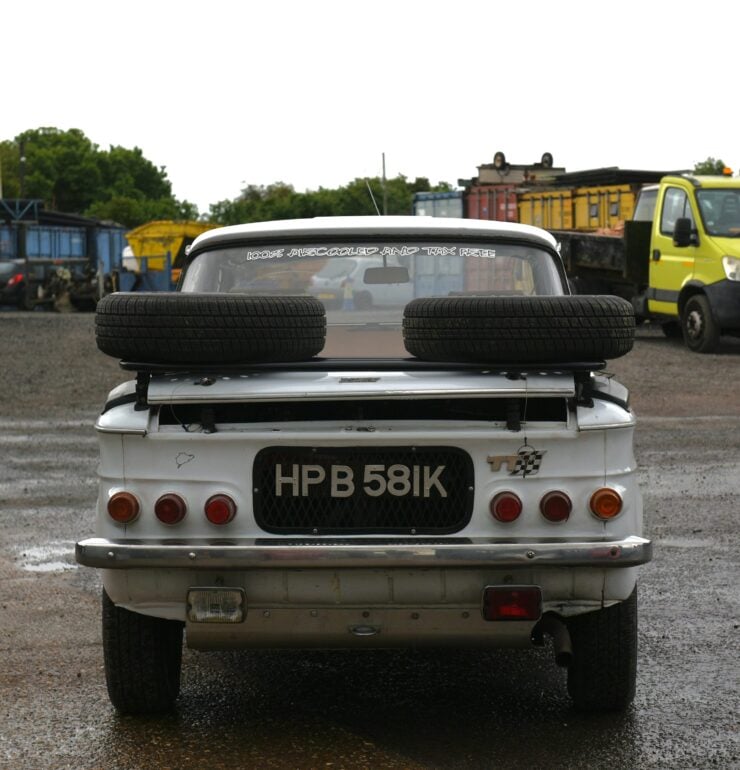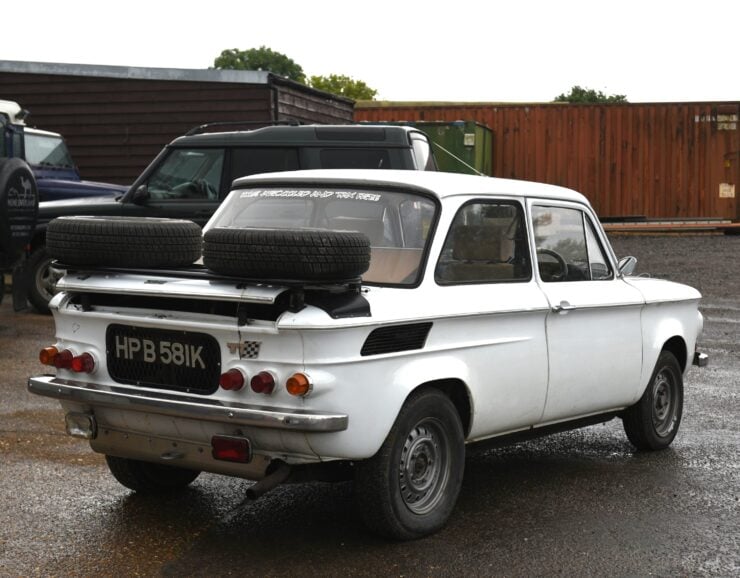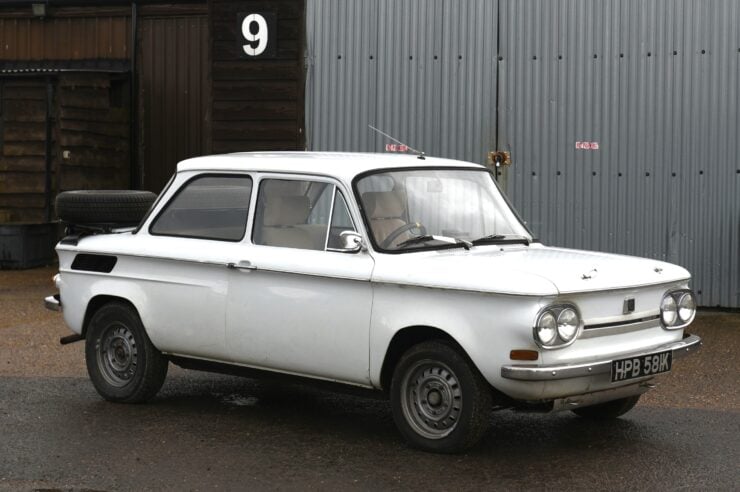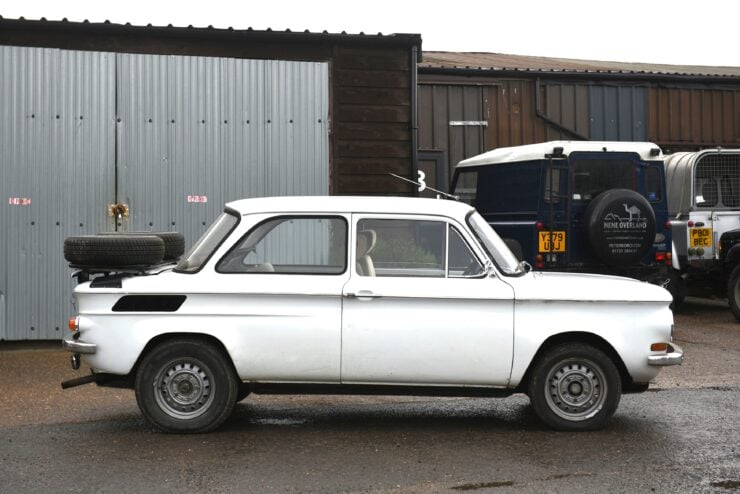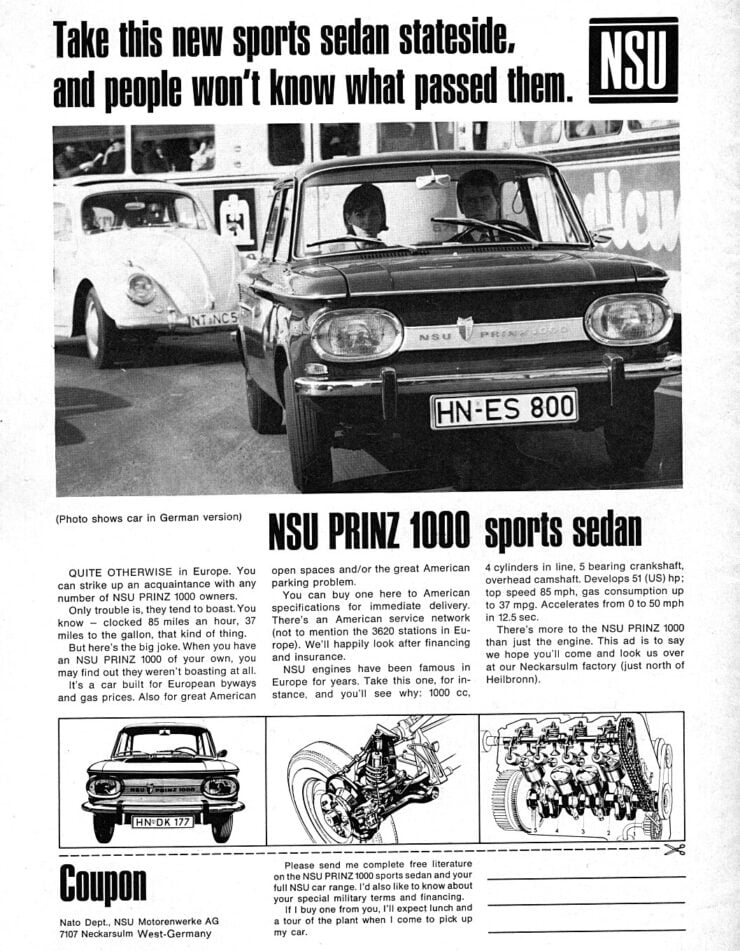This is an NSU Prinz 1000 that has been carefully upgraded to rally-specification and used in competition. It’s now being offered for sale as an interesting (and far less expensive) alternative to other air-cooled, rear-engined German sports cars from the era – like the legendary 911.
The NSU Prinz 1000 was a feisty performer, with its advanced alloy-head, overhead cam, cross-flow engine it often dominated its class when racing, and regularly embarrassed much more powerful machines on track. Surviving examples are now sought after by collectors and by vintage racers who want to get them onto a circuit or rally stage.
Fast Facts: The NSU Prinz 1000
- The NSU 1000 shown here began life as a standard 1971 example but has since been transformed into a rally-spec car with a 1297cc engine, reinforced driveline components, underbody shielding, and dual fuel pumps. It’s offered in rally-ready condition with spare gearboxes, wheels, and an extra engine included in the sale.
- Introduced in 1963, the NSU Prinz 1000 was a compact, rear-engined, air-cooled car with advanced engineering including an overhead cam inline-four and fully independent four-wheel suspension. Sports car models like the TT and TTS became popular in motorsport thanks to their agile handling and their low weight.
- NSU Motorenwerke AG began in 1873 as a knitting machine company and grew into a major producer of bicycles, motorcycles, and eventually cars. Known for consistent technical innovation, NSU played a pioneering role in the development of the Wankel rotary engine before being absorbed into Audi under Volkswagen ownership in 1969.
- Surviving NSU 1000s are now desirable among collectors and vintage racers, offering a more affordable and distinctive alternative to other cars in their class, like the Mini Cooper or Hillman Imp. Their combination of solid motorsport pedigree, clever design, and rarity makes them a solid choice for those who want to race.
History Speedrun: NSU Motorenwerke AG
NSU Motorenwerke AG began as the knitting machine manufacturer “Mechanische Werkstätte zur Herstellung von Strickmaschinen” in 1873, founded by Christian Schmidt in Riedlingen, Germany. By 1880, the company had moved to Neckarsulm – where the name NSU originates – and shifted the focus of its production toward bicycles. At this time, bicycles were a cutting-edge, affordable transportation revolution, and NSU sold their first models with their own “NSU” branding by the 1890s.
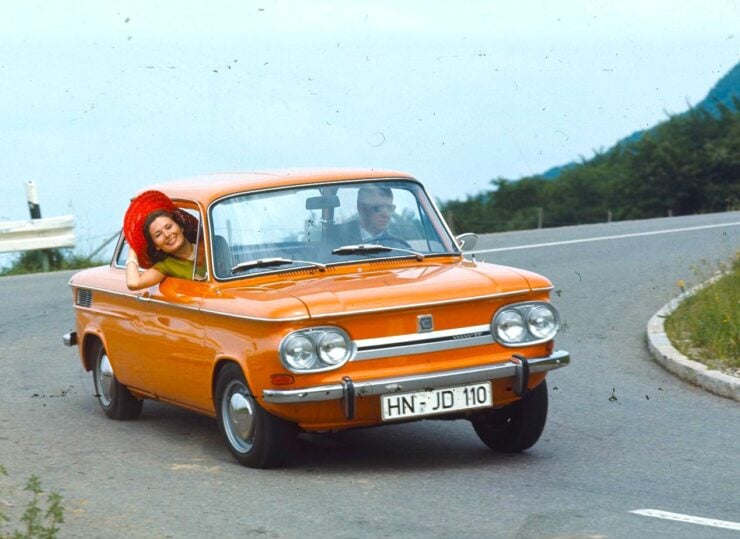

Motorcycles followed bicycles in 1901, and NSU quickly established itself as a serious player in both two- and four-wheeled transportation. The company built its first car in 1905, but a full-fledged automobile program didn’t gain momentum until after World War I.
By the 1920s, NSU was producing well-engineered cars like the 8/24 and 10/30 models. However, financial overreach during this time period forced NSU to sell its car division and Heilbronn factory to Fiat in 1929, leading to a hiatus in car production while NSU focused entirely on motorcycles.
By the 1950s, NSU was Europe’s largest motorcycle manufacturer, with models like the NSU Max and Quickly selling in huge numbers. With motorcycle sales declining in the mid-1950s as consumers shifted to automobiles, NSU returned to car manufacturing, starting with the Prinz in 1958 – a compact, rear-engined economy car that evolved into several sporting and practical variants through the 1960s and beyond.
NSU is perhaps best remembered today for its pioneering work with the Wankel rotary engine. Partnering with Felix Wankel, NSU launched the futuristic-looking NSU Spider in 1964, the world’s first production rotary-engined car.
Its successor, the NSU Ro 80, debuted in 1967 to considerable acclaim for its modern styling and engineering, winning the 1968 European Car of the Year award. However, the Ro 80’s rotary engine proved fragile and expensive to maintain – significantly undermining NSU’s finances.
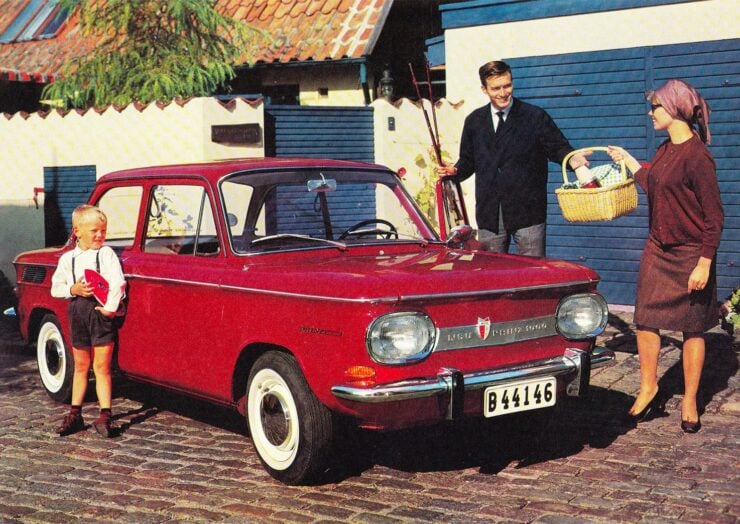


By 1969, the struggling company was absorbed by Volkswagen, which merged it to form Audi NSU Auto Union AG. While the NSU name disappeared after the early 1970s, its technological influence – particularly the rotary engine and advanced compact car design – persisted in the legacy of Audi, and of course in Mazda’s later Wankel engine development.
The NSU Prinz 1000
The NSU Prinz 1000 was introduced in 1963 as a larger, more refined successor to the earlier NSU Prinz models from the 1950s. It marked a shift in the company’s small car strategy, positioning the new model in the growing European market for compact, affordable family sedans.
Unlike its predecessors, which featured vertical twin-cylinder engines, the Prinz 1000 used a more modern air-cooled inline-four, mounted at the rear, sending power to the rear wheels.
The engine was derived from NSU’s successful motorcycle engine designs, but scaled up for car use. It initially displacing 996cc and delivering approximately 40 bhp, which was sufficient to give the small, lightweight car a respectable turn of speed. Later versions, like the 1000 TT and 1200 TTs, had engine upgrades and improved suspension arrangements, making them more capable and giving them a significant performance boost.
The car had independent suspension on all four corners with double wishbones on the front end and semi-trailing arms in the rear, as a result, the Prinz 1000 offered some of the best handling in its displacement class and price point.
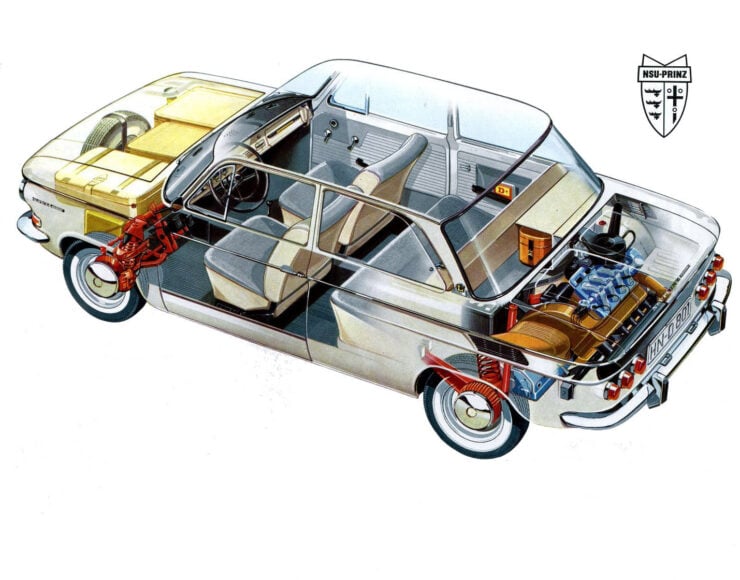


Styling was squared-off and understated, resembling a scaled-down Chevrolet Corvair, a comparison made by many observers in-period. It was utilitarian but not unattractive, with its boxy proportions offering decent space inside for passengers and luggage – in a similar way to the BMC Mini and Hillman Imp.
The car also gained a solid reputation in the world of motorsport – particularly the higher-performance TT and TTS sports variants. These tuned versions, produced in Neckarsulm and often raced in hillclimbs, rally, and touring car events, featured twin carburetors, stiffer suspension, and output ranging from 65 to over 85 bhp.
Their lightweight design and good suspension made them surprisingly quick and competitive, they also cost quite a bit less than many of the cars they raced against which helped lower the barrier to entry for many aspiring racing drivers. The cars tipped the scales at approximately 1,450 lbs depending on the version, that’s just 658 kgs!
Production of the Prinz 1000 and its variants continued until the early 1970s. By then, NSU had begun focusing on the Ro 80 and rotary development, while Volkswagen’s acquisition of the brand was reshaping its future as part of Audi. Many examples of the Prinz 1000, if not most, were lost to rust, junkyards, accidents, or neglect – so surviving cars are now much in demand.
The NSU Prinz 1000 Shown Here
The vehicle you see here is an NSU Prinz 1000 from 1971, or more correctly, I should say it’s an NSU 1000 as they dropped the Prinz from the name in early 1967. Despite this, it’s common for people to still include it in the name to help identify the model.
Though it started life as a relatively standard NSU 1000, this car was substantially upgraded in later years to turn it into a competitive rally car. These modifications included an engine enlargement from the original 996cc to 1297cc, it also now has reinforced drive shafts and universal joints, underbody shields, and twin fuel pumps.
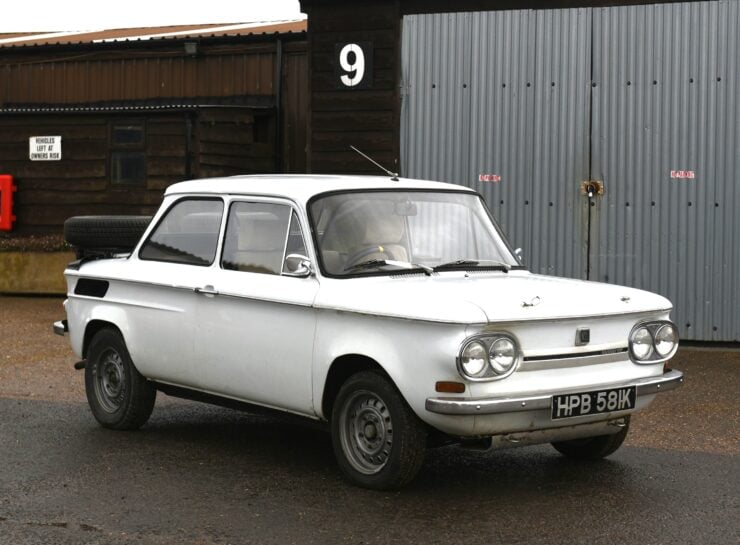


Inside you’ll find a tan cloth interior, a trip reader, and map lights – the car is offered in ready-to-rally condition. It has two spare wheels mounted to the trunk lid, and it comes with numerous spare parts including gearboxes, an engine, wheels, etc.
If you’d like to read more about it or register to bid you can visit the listing here. It’s due to roll across the auction block on the 25th of June with H&H Classics with a price guide of £8,000 – £10,000, or $10,820 – $13,520 USD.
Images courtesy of H&H Classics + Audi Ag


